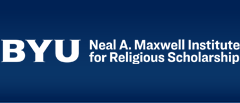Studies in the Bible and Antiquity
Keywords
Jewish Antiquity, Biblical studies, religious scholarship
Abstract
Over the last several decades, scholarly discussion on the textual world of the Second Temple has been shifting. Ideas about texts and the development of the biblical canon began to be reshaped by the discovery of the Dead Sea Scrolls, which altered previously established ideas about the configuration of a prebiblical canon. Investigation of those and other texts made it apparent that the structure of the biblical canon was still fluid at a much later date than was originally thought. These new scholarly analyses are redefining the timelines and ideas about the early shape of the biblical text and its elasticity. Such developments have been particularly intriguing for Latter-day Saints because they have generated new ways of thinking about the historic limits of text and canon. In her new book, Eva Mroczek takes the discussion a step further and in a direction that will resonate well within the Mormon scholarly community. Her aim is to identify the “literary imagination” of Jewish antiquity or, in other words, the ways in which ancient writers and scribes conceived of their own textual world. Although she is not the first to point out the anachronistic difficulties that can plague modern scholars in their approach to texts from antiquity, she is one of the first to try to re-create a vision of an original literary mindset from the ancient texts themselves. Her study culls texts from antiquity for clues about the ways in which ancient communities thought about literature, text, authorship, and canon.
BYU ScholarsArchive Citation
Anderson, Carli
(2016)
"Eva Mroczek. The Literary Imagination in Jewish Antiquity. New York: Oxford University Press, 2016.,"
Studies in the Bible and Antiquity: Vol. 8, Article 13.
DOI: https://doi.org/10.18809/sba.2016.0113
Available at:
https://scholarsarchive.byu.edu/sba/vol8/iss1/13


